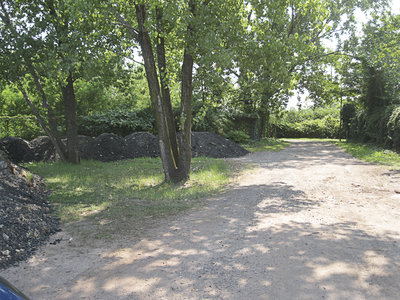Town officials aren’t waiting for the next devastating storms to hit – not after Hurricane Irene in 2011, and Hurricane Sandy in 2012.
“We’re working at beefing up flood prevention every day,” said Mayor Michael Gonnelli.
As with many other places in the metropolitan area, Secaucus suffered significantly from the effects of Sandy.
Surrounded by water on every side and with a now dry streambed passing under streets at the center of town, Secaucus has always been vulnerable to flooding.
Gonnelli, first as superintendent of the Department of Public Works and later as a commissioner on the New Jersey Meadowlands Commission, has been involved with the struggle to keep the town as dry as possible – building berms along sections of the town where water poured into streets, and rebuilding drainage systems that will help get water out of the town during heavy rain.
But since Sandy hit last fall, the town has been doing even more, much of it by its own employees.
“We’ve done a lot for flood control and we’re doing even more,” Gonnelli said.
Raising berms
The town has done some work on its own – such as raising berms (the dirt and stone walls that separate dry land from rising water) an additional two feet to deal with the new expected high levels that could rise during future storms.
While the berms or dikes were constructed originally as a flood prevention mechanism, they have also become part of the town’s riverfront walkway. One of the combined anti-flooding plans for the north end would use county open space grant funds from the early 2000s to purchase two properties. This would allow the town to complete a section of the walkway and add an additional wall of protection against future floods, and to demolish a section of an old warehouse to create more open park space.
“We’re currently removing asbestos from around the piping and the roof, and once that’s done the building will be torn down,” Gonnelli said.
While previous flood mitigation plans allowed Secaucus to deal with flooding better than other towns such as Hoboken, areas such Acorn Road, Farm Road, and Millridge Road saw unprecedented levels of water during recent storms. Even Gonnelli’s home in the north end was under water.
“Right now we’re raising existing berms an additional two feet and building berms where they didn’t exist,” Gonnelli said. “That’s ongoing, and we’ve probably did close to a mile. We have an agreement with a contractor for lease of equipment. We’re getting certified clean soil from a different area, and shopping around so it’s costing us nothing.”
“We’re working at beefing up flood prevention every day.” – Mayor Michael Gonnelli
____________
But the hydrology of Secaucus has always been a challenge: How to keep water from flowing into low-lying areas?
Secaucus continues to make strides.
“The Penhorn Creek pumping station is completely rebuilt,” Gonnelli said.
A new storm line was installed in the Farm Road area to relieve flooding there.
“That’s been completed and is fully operational,” he said.
Sack Creek – which is a conduit for much of the drainage for the center of town as well as for some of the warehouse areas – was upgraded several times, with new pumps and ditch clearing, but challenges still remain as larger storms dump more water onto the town.
One of the keys to this portion is the upgrading of the Golden Avenue Pump Station, which the town plans to do shortly.
“Tuesday night we’re going out to bid on the Golden Avenue Pump Station,” Gonnelli said, noting that his workers are also installing new tide gates.
Wetlands mitigation near Mill Creek
The town has also contracted for a wetlands mitigation project near the high school that will not only provide some protection against flooding, but will restore some of the natural habitat near Millridge Road, picking up from a project that was first done by the New Jersey Meadowlands Commission in 2002.
“We’re going to be leasing twenty something acres to restore them to their original, functioning state,” he said. “This is a wetlands mitigation project that means wetlands enhancement. We’re not getting rid of the property. It will be green in perpetuity. But we’re going to be leasing it through a company called Evergreen, who will mitigate it, clean all the ditches, institute flood controls, replant the whole site with the right type of grasses, and they will be paying us something like $20,000 an acre. So this will generate for the town almost $500,000, and at the same time be doing wetlands enhancement.”
By controlling the growth of reeds and re-establishing tidal flow as well as creating open water areas and planting of native vegetation, the town will create an environment that will result in low marsh habitats that are flushed daily by the tides.
This picks up on a previous project done by NJMC more than a decade ago, but the town will be overseeing it rather than the commission, Gonnelli said.
“This will benefit the environment and will benefit people who live near there by providing them with flood control,” he said.
Al Sullivan may be reached at asullivan@hudsonreporter.com.
